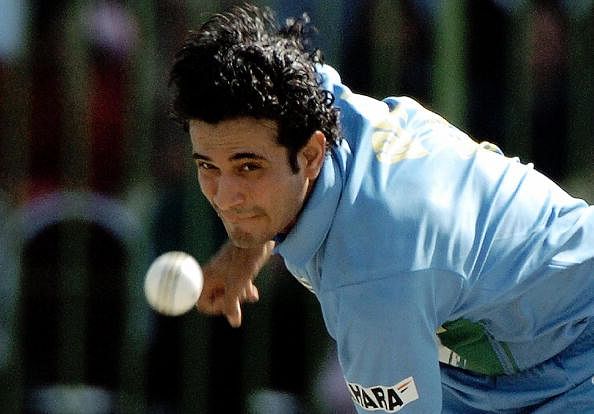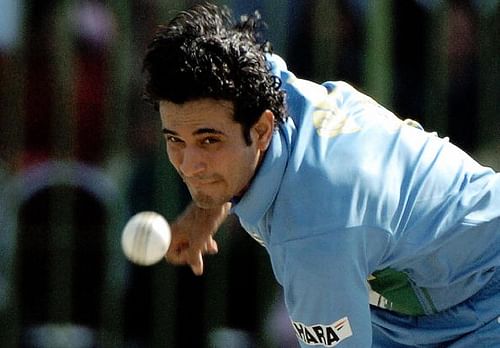
Why don't India produce world-class fast bowlers?

Indian bowlers tend to fade away after showing early promise
“Bowlers win matches” – it is one of the most cliched statements in cricket. In Test cricket it is a matter of fact that you must take 20 opposition wickets in order to win a match, unless a side loses after declaring an innings (which is a rarity). Batsmen may score tons of runs, but at best they can only save a Test match, not win it. A team must therefore, possess a potent bowling attack to win matches.
In Indian cricket, it has been a perennial problem now, i.e. the inability to take 20 wickets in Tests and to restrict the scoring in limited over formats. On the low and dry pitches of the subcontinent, this problem is camouflaged as spinners do most of the bowling.
However in foreign conditions, India struggles most of the times and the main cause is the lack of penetrative fast bowlers in our armour. The purpose of this article is to analyze as to why does India lag behind in producing world class fast bowlers and what can be done to improve the situation.
Traditionally, India has had a culture of batting. There is almost that colonial hangover which suggests that batsmen are somewhat “superior” to bowlers. This belief has passed on from generation to generation. Batting is considered the royal thing to do even in the playgrounds of small towns and villages. As a corollary to this, bowlers are looked down upon as those who burn their sweat while the rewards are being enjoyed by batsmen.
Physique and lack of strength have been touted as possible reasons for India to not have fast bowlers, but there is little merit in this argument. Else, we would not have seen a never ending assembly line of fast bowlers from our colonial cousins Pakistan who have a similar physique and lifestyle.
The mention of Pakistan takes us to the next cause i.e. a dearth of fast bowling heroes in India. Every kid wants to become the next Sachin Tendulkar or the next Virat Kohli. Barring Kapil Dev and Javagal Srinath to a certain extent, there aren’t enough fast bowling legends in the country whom the youngsters can look up to. This is a batting loving nation where all the limelight and stardom is stolen by the men with bat in their hands.
A look at other side of the border reveals that fast bowlers are revered in Pakistan like nothing else. From Sarfraz Nawaz, Imran Khan to Wasim Akram, Waqar Younis , Shoaib Akhtar and Umar Gul – they have been the torchbearers of Pakistan cricket inspiring youngsters to take up fast bowling.
Another argument can be made in the form of pitches which are used in India. Spin bowling has been the forte of India and pitches here are made keeping that in mind. Seldom is any grass left on the pitch during the domestic games which could motivate bowlers to bend their back and bowl quick. As a result, even while travelling abroad, our pace bowlers struggle to find the right line and length suited to the grassy pitches because they simply do not have enough practice of bowling on such pitches.
Now the question arises as to what can be done to improve the scenario. It is tough to digest that from a cricket crazy population of a billion plus, there are so few quick bowlers coming out. First of all, the BCCI should conduct a nationwide talent hunt programme for fast bowlers. Based on mathematical probability, any such programme is sure to discover a handful of talented fast bowlers due to the huge population. After forming a pool of such bowlers, they can be collectively trained at a pace bowling academy.
As has been mentioned already, barring 1 or 2 names, there aren’t enough experts of fast bowling in India. Therefore, the board must do all it can to hire some of the bowling legends from countries like Pakistan, Australia and South Africa to coach these young talented bowlers.
There have been quite a few instances in the recent past of a young fast bowler showing promise – only to lose his pace and effectiveness after a couple of seasons (Zaheer Khan, Irfan Pathan, Ashish Nehra, Munaf Patel, Ishant Sharma….). All of them had two things in common : (i) they got injured soon after bursting on to the scene, and (ii) they had to change their bowling actions after recovering from injury.
This points towards a problem in the technical aspects of bowling and a possible solution is that all such aspects, vis-a-vis run-up, action, wrist position, the follow through must be sorted out an young age – preferably at or before the U-19 level. This again emphasizes the need to form a talent pool of fast bowlers and to provide them with the best training right from an early age, so that injuries can be avoided.
But before all this to happen, the mindset of the kids needs to change and they must perceive fast bowling as an art in itself, no less than batting and worthy of as much reverence, if not more. In fact, I believe that the very culture of batting about which we talked in the beginning can be used to his advantage by any budding fast bowler. The logic is simple. There is so much scarcity of the fast bowler species in Indian cricket that as soon as a young boy develops into a really quick bowler, he is bound to rise up the ranks sooner than any young batsman.
This itself should serve as a motivating factor for the young kids and hopefully, soon we will be taking pride in seeing an Indian fast bowler intimidating the batsmen across the world.